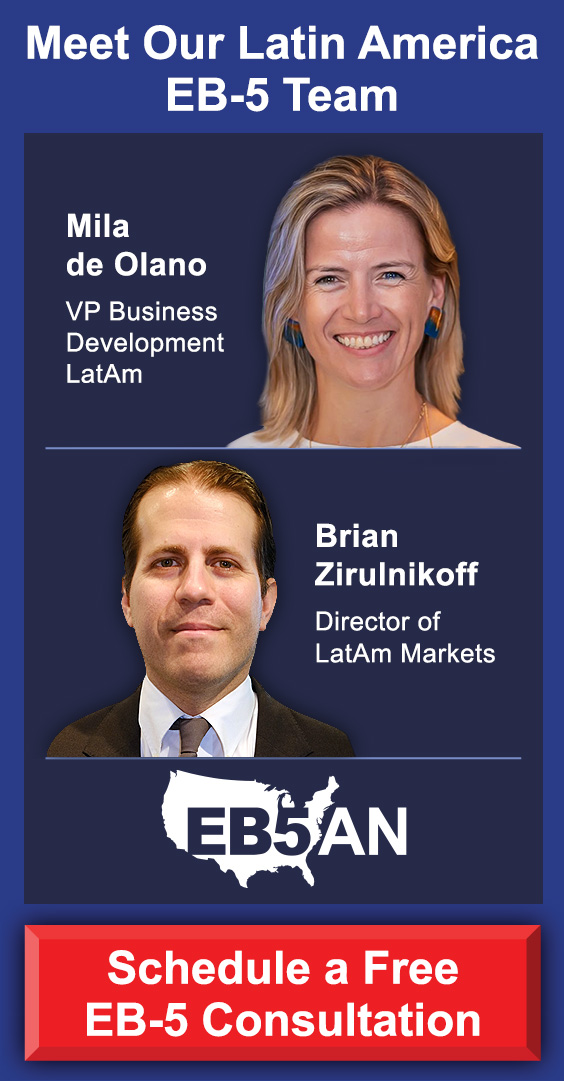For international investors seeking to obtain a U.S. Green Card through the EB-5 Immigrant Investor Program, one of the most critical steps in the process is transferring funds from abroad. While this may seem like a straightforward procedure, it’s crucial to understand the various legal and financial requirements involved in transferring your money to the United States.
In this article, we’ll guide potential EB-5 investors through the important things to know about transferring funds from abroad, including the complexities of international transactions, keeping up to date with changing regulations, and the importance of a knowledgeable immigration attorney.
The Basics of the EB-5 Investment Program
Key Considerations When Transferring Funds to the U.S.
- Know the Legal Requirements in Both Countries
- Be Aware of Changing Regulations
- The Role of International Banks in Fund Transfers
- Currency Exchange Rates and Transaction Costs
Working With an Experienced Immigration Attorney
- Source of Funds Verification
- Navigating Local Regulations
- Advising on Financial Institutions and Methods
EB5AN Can Help You With Your Questions
The Basics of the EB-5 Investment Program
Before delving into the details of transferring funds, it’s important to first understand the EB-5 program generally. Through this program, foreign nationals can obtain a U.S. Green Card by investing in a new commercial enterprise that will benefit the U.S. economy and create jobs for U.S. workers.
To qualify, an investor must commit a minimum investment of $1,050,000, or $800,000 if the project is located in a rural or high-unemployment area, which are called targeted employment areas. The investor’s funds must then be used to create at least 10 full-time jobs for U.S. workers.
The EB-5 process involves several steps, including the selection of a project, completing the investment, filing an I-526E petition, and applying for a Green Card.
One of the most important tasks in this process is transferring the necessary funds from your home country to the U.S.
Key Considerations When Transferring Funds to the U.S.
Like the EB-5 process as a whole, transferring your funds is a multi-step process, and it’s important to understand the rules and regulations for each step.
Know the Legal Requirements in Both Countries
Transferring funds for an EB-5 investment is not as simple as transferring money from one bank account to another. There are important legal regulations that investors must adhere to, both in their home country and in the U.S.
Each country has its own laws about how large sums of money can be moved internationally. For instance, many countries have foreign exchange controls or restrictions on sending large amounts of money abroad. In some cases, investors may need to prove that the money they are transferring comes from a legal and legitimate source, such as personal savings, business profits, or inheritance.
In the U.S., the regulations surrounding EB-5 fund transfers are strict. U.S. Citizenship and Immigration Services (USCIS) requires that EB-5 investors prove the legal source of their investment funds, ensuring that the money isn’t from criminal activities or illicit sources. This process is called “source of funds” verification. During this process, investors must provide detailed documentation to demonstrate the origin of their capital, such as tax records, business documents, and bank statements.
Depending on your specific source of funds and your country’s rules, the source of funds process can be rather lengthy and complex. To ensure the process is as seamless as possible, it’s crucial that you gather all the required documentation and pay careful attention to all the rules and regulations around your fund type and transfer.
Be Aware of Changing Regulations
The laws governing both international fund transfers and EB-5 investments can change over time, which is why it’s essential for investors to stay up to date with any regulatory changes.
For example, certain countries may update their foreign currency controls, which could impact the process of transferring money out of the country. Similarly, U.S. immigration laws and EB-5 program regulations can change, affecting the way investors need to approach their fund transfers.
In the past, there have been shifts in the minimum investment amounts for EB-5 projects, changes to the types of eligible investments, and new rules for proving source of funds. Therefore, it is highly important to be aware of any changes that may impact your investment.
One way to stay informed is by following trustworthy sources, such as updates provided by official government sites like USCIS or the Department of State. This is why partnering with an immigration attorney and a regional center team who are knowledgeable about EB-5 regulations and who stay updated on changes is critical.
The Role of International Banks in Fund Transfers
International banks play a central role in facilitating the transfer of funds for EB-5 investments. When transferring large sums of money, it’s essential to use a bank that is experienced with international transactions and understands the intricacies of transferring funds for the purpose of obtaining a U.S. Green Card.
Some banks may have more experience dealing with EB-5 transactions, which could make the process smoother. These banks often have departments or specialists who understand the legal and compliance issues involved in transferring funds from a foreign country to the U.S.
When selecting a bank for the transfer, it’s a good idea to inquire about fees, timelines, and any specific documentation requirements the bank may have. You should also confirm that the bank can provide you with the necessary records to document the transfer of funds, as USCIS will require these records as part of the Green Card application process.
In many cases—especially with regional center investments—these funds are sent to a secure escrow account, which holds the capital until certain conditions, such as receipt of the I-526E petition, are met.
Currency Exchange Rates and Transaction Costs
Another factor that investors need to consider is the exchange rate between their local currency and the U.S. dollar. Currency fluctuations can affect the value of your investment, and it’s wise to be prepared for any potential changes in the exchange rate.
Additionally, transaction costs associated with international money transfers can add up. Be sure to ask about fees, as these can vary widely depending on the method you use to transfer funds, the amount being sent, and the banks or financial institutions involved.
Working With an Experienced Immigration Attorney
One of the most important decisions EB-5 investors can make is hiring an experienced immigration attorney who specializes in the EB-5 program and has expertise in dealing with international fund transfers. An attorney who is experienced with EB-5 matters and familiar with the specific requirements of your home country can save you significant time and trouble throughout the fund transfer process.
In particular, an attorney can help you with the following steps.
Source of Funds Verification
Your immigration attorney can help you organize the necessary documentation to prove the legal origin of your investment funds. This can include providing detailed records of the transactions, tax filings, and other relevant documents to satisfy USCIS requirements.
And should USCIS make any mistakes regarding your source of funds or request any additional documentation, your immigration attorney can also help you respond so that you can move forward with your petition.
Navigating Local Regulations
Each country has its own set of rules regarding international money transfers, and an attorney who is familiar with the regulations in your home country can provide valuable advice on how to move your funds without violating any laws.
Advising on Financial Institutions and Methods
Attorneys who have handled cases similar to yours will likely have firsthand experience working with a variety of banks and financial institutions. As a result, they will be able to advise you on which may be best suited for handling your international transfer and what methods you can use to make sure the transfer goes smoothly.
EB5AN Can Help You With Your Questions
While it may seem simple on the surface, transferring EB-5 investment funds from abroad involves a complex web of legal, financial, and regulatory steps. Whether you are transferring funds from India, China, or any other country, it’s essential to stay informed about both local and U.S. regulations.
Keep in mind that the journey to obtaining your U.S. Green Card begins with making sure your funds are handled correctly and lawfully, and working with the right team can facilitate that.
EB5AN has helped more than 2,300 families from 70+ countries relocate to the United States as lawful permanent residents. Our team has more than a decade of experience, and we offer our clients first-rate, low-risk EB-5 regional center projects with a 100% USCIS project approval rate.
If you would like to know more about your EB-5 investment options or how to transfer your funds, book a free call with our expert team today.










